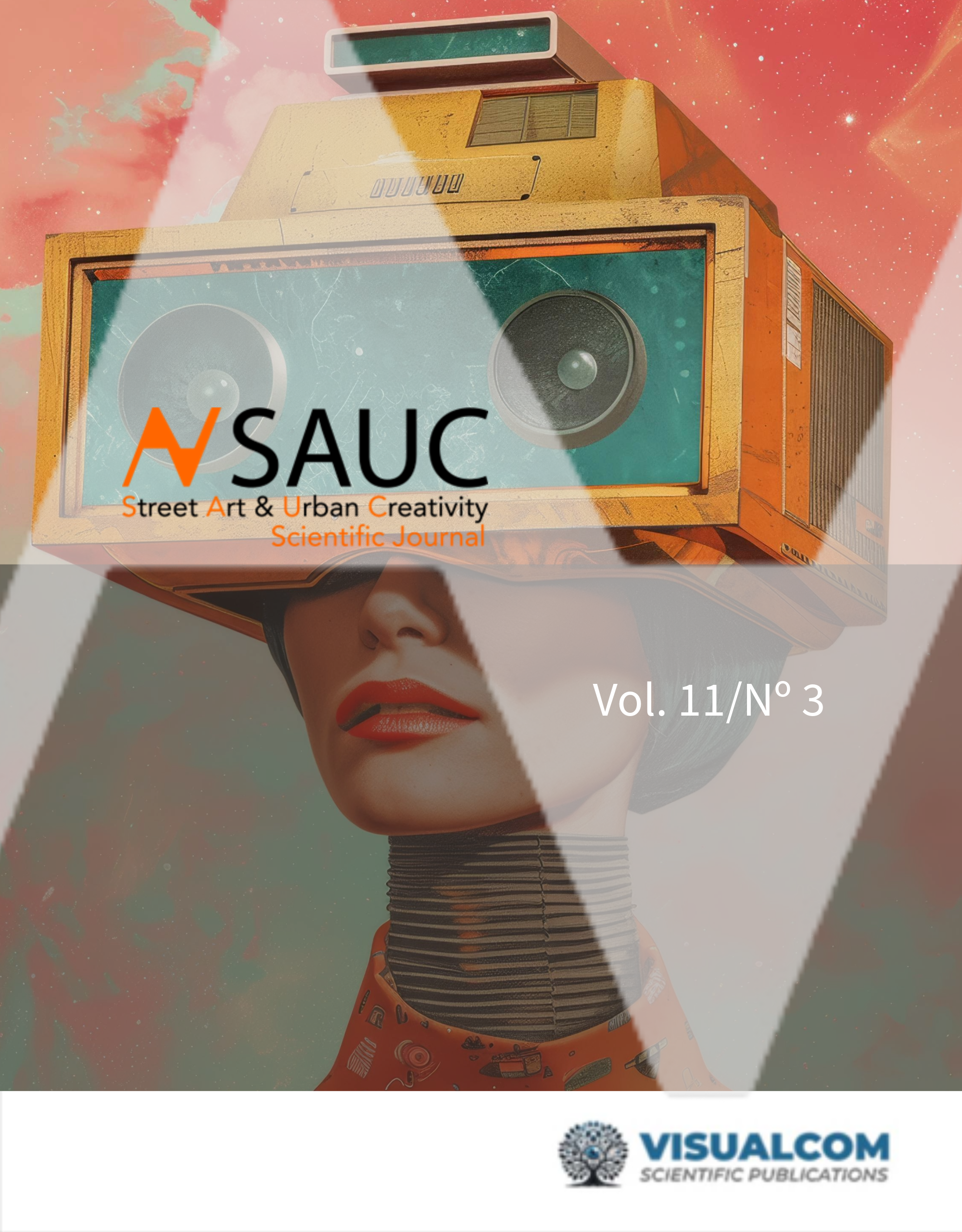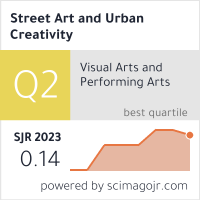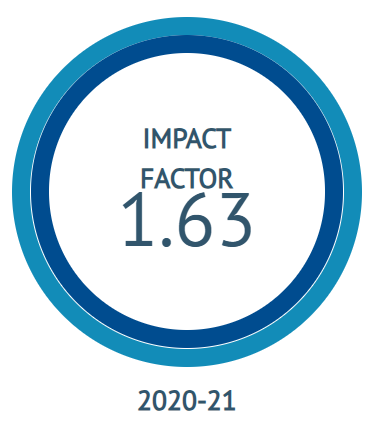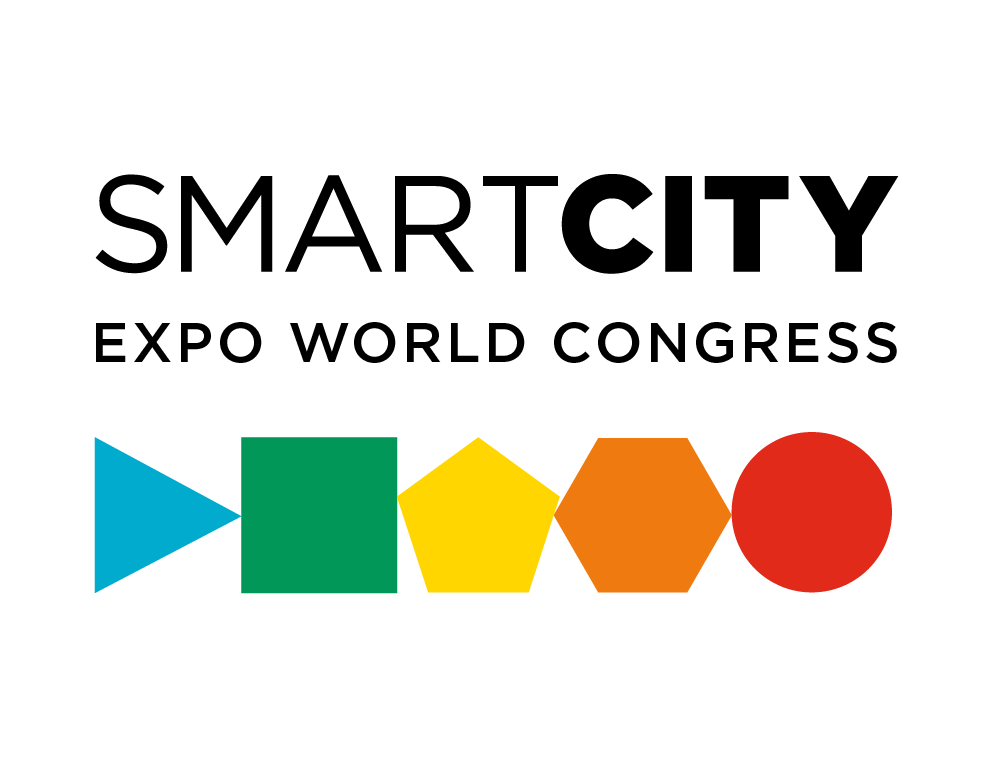Tourism and the Bogotá brand
An associative study from the perspective of foreign visitors
DOI:
https://doi.org/10.62161/sauc.v11.5737Keywords:
City brand, Bogota brand, City marketing, Tourism, Regional BrandAbstract
The development of a city brand is structured through a synergistic process that involves and promotes socioeconomic, creative, local, and national factors. In addition, they must be the basis for positioning both among residents and among potential visitors as tourists or investors. The present study aimed to identify the perceptions towards the city of Bogotá by foreign visitors and possible relationships with age and gender, in line with the concept of city brand. A quantitative, cross-sectional, descriptive, and associative study was carried out through surveys of 500 foreigners who visited the city of Bogotá in 2023. General perceptions and significant associations were observed between demographics and factors related to the elements that make up the concept of city brand. Results are discussed and recommendations are made, specifying limitations and considerations for future studies on city brand
Downloads
Global Statistics ℹ️
|
417
Views
|
301
Downloads
|
|
718
Total
|
|
References
Alcaldía de Bogotá, (septiembre, 2024). Bogotá, mi ciudad, mi casa. https://bogota.gov.co/tag/bogota-mi-ciudad-mi-casa
Alcaldía de Bogotá, (septiembre, 2024). En 2024 Bogotá incrementó un 5,6 % la llegada de turistas internacionales. https://bogota.gov.co/internacional/turismo-en-bogota-en-2024-incremento-un-56-la-llegada-de-turistas
Alperytė, I., & Išoraitė, M. (2019). Developing a city brand. Journal of Intercultural Management, 11(4), 1-27. https://doi.org/10.2478/joim-2019-0022 DOI: https://doi.org/10.2478/joim-2019-0022
Amaya, H. (Abril de 2016). La renovación de la marca ciudad de bogotá. Más Poder Local, (27), 12-14.
Anholt, S. (2010). Definitions of Place Branding- Working towards a resolution. Place Branding and Public Diplomacy, 6(1), 1-10. https://doi.org/10.1057/pb.2010.3 DOI: https://doi.org/10.1057/pb.2010.3
Arboleda Castro, M. E., Velasco Cano, C., & Zuluaga Piedrahíta, S. (2021). Marca ciudad para Santiago de Cali mediante la metodología básica de diseño. Revista Sapientía, 13(26), 8-16. https://doi.org/10.54278/sapientia.v13i26.100 DOI: https://doi.org/10.54278/sapienta.v13i26.100
Ávila Campoverde, F., & Ugalde, C. (2020). Instagram la red social con mayor interacción para promocionar destinos turísticos en Ecuador. Investigaciones Turísticas, (19), 50-72. https://doi.org/10.14198/INTURI2020.19.03 DOI: https://doi.org/10.14198/INTURI2020.19.03
Baker, B. (2012). Destination Branding for Small Cities; the Essentials for Successful Place-Branding. New York: Creative Leap Books.
Calvento, M., & Colombo, S. (2009). La marca-ciudad como herramienta de promoción turística ¿Instrumento de inserción nacional e internacional? Estudios y Perspectivas en Turismo, 18, 262-284. http://hdl.handle.net/11336/113855
Carbache Mora, C. A., Delgado Caicedo, Y. L., & Villacis Zambrano, L. M. (2020). Influencias del marketing experiencial para posicionar la marca ciudad en Bahía de Caráquez. Investigación & Negocios, 13(22), 33-42. https://doi.org/10.38147/invneg.v13i22.98 DOI: https://doi.org/10.38147/invneg.v13i22.98
Carrillo Sánchez, L. G., & García Calderón, C. I. (2019). Gestión de la marca Ciudad de México (CDMX) y su impacto económico. Questiones Publicitarias, 24, 77-85. https://doi.org/10.5565/rev/qp.320 DOI: https://doi.org/10.5565/rev/qp.320
Carrillo Sánchez, L. G., García Calderón, C. I., Cuevas Contreras, T., & Ruiz León, A. A. (2020). Big data en la marca Ciudad de México ante la fragmentación de audiencias. Investigaciones Turísticas, 20, 124-142. https://doi.org/10.14198/INTURI2020.20.06 DOI: https://doi.org/10.14198/INTURI2020.20.06
Casais, B., & Monteiro, P. (2019). Residents’ involvement in city brand co creation and their perceptions of city brand identity: A case study in Porto. Place Branding and Public Diplomacy, 15, 229–237. https://doi.org/10.1057/s41254-019-00132-8 DOI: https://doi.org/10.1057/s41254-019-00132-8
Chan, A. (2022). Brand element: Exploring the effect on city branding. International Journal of Professional Business Review, 7(4), 1-20. https://doi.org/10.26668/businessreview/2022.v7i4.e750 DOI: https://doi.org/10.26668/businessreview/2022.v7i4.e750
Chan, A., Suryadipura, D., & Kostini, N. (2021). City image: City branding and city identity strategies. Review of Integrative Business and Economics Research, 10(Supplementary Issue 1), 330-341.
Creswell, J. W. (2013). Research design: Qualitative, quantitative, and mixed methods approaches. Sage publications.
Dinnie, K. (2004). Place branding: Overview of an emerging literature. Place Branding, 1(1), 106-110. https://doi.org/10.1057/palgrave.pb.5990010 DOI: https://doi.org/10.1057/palgrave.pb.5990010
Duque, E. J. D., Sánchez-Torres, J. A., & Sanabria, J. S. S. (2022). City brand evolution research and future agenda: bibliometric and science mapping analysis. Heliyon, 8(8). https://doi.org/10.1016/j.heliyon.2022.e10031 DOI: https://doi.org/10.1016/j.heliyon.2022.e10031
Duque, I. (2011). Bogotá entre la identidad y el marketing urbano. En Cuadernos de Geografía. Revista Colombiana de Geografía, 20(1), 29-45. DOI: https://doi.org/10.15446/rcdg.v20n1.23065
Durán Alfaro, V., González Arce, J. A., & Mercado Peña, C. (2021). La identidad como eje integrador de una marca ciudad. Cuadernos del Centro de Estudios en Diseño y Comunicación. Ensayos, (101), 68-89. https://dx.doi.org/10.18682/cdc.vi101.4086 DOI: https://doi.org/10.18682/cdc.vi101.4086
Fok, K. W. K., & Law, W. W. Y. (2018). City re-imagined: Multi-stakeholder study on branding Hong Kong as a city of greenery. Journal of Environmental Management, 206, 1039-1051. https://doi.org/10.1016/j.jenvman.2017.11.045 DOI: https://doi.org/10.1016/j.jenvman.2017.11.045
Govers, R., Van’t Klooster, E., & Van Keken, G. (2015). Place branding: Creating a sustainable and competitive city identity. Journal of Urban Studies, 42(1), 103-119. https://doi.org/10.12345/urbanstudies.v42i1.103
Gunta, L., & Birthe, M. (2016) A tale of two re-branded cities: Riga, Latvia and Aarhus, Denmark. Social and Behavioral Sciences, 231, 208–215. https://doi.org/10.1016/j.sbspro.2016.09.093 DOI: https://doi.org/10.1016/j.sbspro.2016.09.093
Hernandez-Sampieri, R., & Mendoza, C., (2018). Metodología de la Investigación. Mc Graw Hill.
Instituto Distrital de Turismo (septiembre, 2024). Boletín cifras de turismo en Bogotá. https://www.idt.gov.co/es/sitbog
Invest in Bogotá. (2014). Marca ciudad. https://es.investinbogota.org/marca-ciudad
Kavaratzis, M., & Ashworth, G. J. (2007). Partners in coffeeshops, canals and commerce: Marketing the city of Amsterdam. Cities, 24(1), 16–25. https://doi.org/10.1016/j.cities.2006.08.007 DOI: https://doi.org/10.1016/j.cities.2006.08.007
Kim, S., & Jun, J. (2016). The impact of event advertising on attitudes and visit intentions. Journal of Hospitality and Tourism Management, 29, 1-8. https://doi.org/10.1016/j.jhtm.2016.04.002 DOI: https://doi.org/10.1016/j.jhtm.2016.04.002
Kotler, P., & Gertner, D. (2002). Country as brand, product and beyond: a place marketing and brand management perspective. Journal of Brand Management, 9, 249-26. https://doi.org/10.1057/palgrave.bm.2540076 DOI: https://doi.org/10.1057/palgrave.bm.2540076
Kumar, V. (2016). Examining the role of destination personality and self-congruity in predicting tourist behavior. Tourism Management Perspectives, 20, 217-227. https://doi.org/10.1016/j.tmp.2016.09.006 DOI: https://doi.org/10.1016/j.tmp.2016.09.006
Li, Y., Li, J., & Chen, C. (2020). Exploring business owners' engagement behavior for promoting regional brands in China. Journal of Brand Management, 27(4), 451-466. https://doi.org/10.3390/su151411329 DOI: https://doi.org/10.3390/su151411329
Marroquín-Ciendúa, F., Medina-Labrador, M., Hurtado Méndez, L. C., Mora Hernández, L. P., & Puentes Guzmán, C. N. (2025). Use of UTAUT for analyzing the acceptance and use of electric scooters in the public transport system. Urban, Planning and Transport Research, 13(1). https://doi.org/10.1080/21650020.2025.2458548 DOI: https://doi.org/10.1080/21650020.2025.2458548
Marroquín-Ciendúa, F., Rodríguez-Martínez, G., & Gómez, J. S. (2024). Advertising recall and perceptions of Cartagena as tourist destination: a relational study. Communitas, 29, 113-127. https://doi.org/10.38140/com.v49i.8927 DOI: https://doi.org/10.38140/com.v49i.8927
Martínez Puche, A., Rodríguez Rodríguez, G., & Martínez Roget, F. (2009). Turismo y desarrollo local en un contexto globalizado. Editorial Netbiblo.
Medina-Labrador, M., Marroquín-Ciendúa, F., Bonelo, J. G., Gómez, D. M., & Betancourt, M. V. P. (2024). Obstacles, social norms and communication to improve service in mass transport. An analysis in bogotá’s bus rapid transit system. Pakistan Journal of Life and Social Sciences (PJLSS), 22(2), 100503-100516. https://doi.org/10.57239/PJLSS-2024-22.2.00795 DOI: https://doi.org/10.57239/PJLSS-2024-22.2.00795
Mogollón, J. M. H., González, B. S. P., & Cerro, A. M. C. (2020). Aplicación del enfoque experiencial a la innovación de marketing de destinos turísticos. Innovar: Revista de Ciencias Administrativas y Sociales, 30(77), 63–76. https://doi.org/10.15446/innovar.v30n77.87429 DOI: https://doi.org/10.15446/innovar.v30n77.87429
Ondiviela, J. A. (2020). Beyond SmartCities: How to Create an Attractive City for Talented Citizens. Kult-ur, 7(13), 205–232. https://doi.org/10.6035/Kult-ur.2020.7.13.8 DOI: https://doi.org/10.6035/Kult-ur.2020.7.13.8
Özder, C. G. A. (2022). Tourism advertising and destination image building through cultural heritage in Croatia: A comparative study of Dubrovnik and split. En I. Krom (ed.) Handbook of Research on Global Perspectives on International Advertising (pp. 208–232). IGI Global Scientific Publishing. https://doi.org/10.4018/978-1-7998-9672-2.ch011 DOI: https://doi.org/10.4018/978-1-7998-9672-2.ch011
Paleologos, E. K., Caratelli, P., & El Amrousi, M. (2016). Waste-to-energy: An opportunity for a new industrial typology in Abu Dhabi. Renewable and Sustainable Energy Reviews, 55, 1260-1266. https://doi.org/10.1016/j.rser.2015.07.098 DOI: https://doi.org/10.1016/j.rser.2015.07.098
Pasquinelli, C., Trunfio, M., Bellini, N., & Rossi, S. (2022). Reimagining urban destinations: Adaptive and transformative city brand attributes and values in the pandemic crisis. Cities, 124, 103621. https://doi.org/10.1016/j.cities.2022.103621 DOI: https://doi.org/10.1016/j.cities.2022.103621
Piehler, R., Roessler, A., & Burmann, C. (2021). The role of leadership and communication in internal city branding. Journal of Product & Brand Management, 30(6), 854-865. https://doi.org/10.1108/JPBM-05-2020-2912 DOI: https://doi.org/10.1108/JPBM-05-2020-2912
Ritchey, F. J. (2008). Estadística para las Ciencias Sociales. El potencial de la imaginación estadística. Editorial McGraw-Hill/Interamericana.
Riza, M., Doratli, N., & Fasli, M. (2012). City Branding and Identity. Procedia-Social and Behavioral Sciences, 35(2012), 293–300. https://doi.org/10.1016/j.sbspro.2012.02.091 DOI: https://doi.org/10.1016/j.sbspro.2012.02.091
Sidorenko, P., & Garrido, P. (2021). Comunicación y publicidad del turismo sostenible en la construcción de la marca ciudad. El caso de la certificación internacional «Biosphere Tourism» en España. Revista Mediterránea de Comunicación/Mediterranean Journal of Communication, 12(1), 15-28. https://doi.org/10.14198/MEDCOM000015 DOI: https://doi.org/10.14198/MEDCOM000015
Silva, F. M., Albuquerque, H., Ramazanova, M., Chavez, G., Mariaca, C., & Muñoz Reyes, C. (2022). The importance of the brand to promote tourist destinations: The cases of Porto (Portugal) and La Paz (Bolivia). En J.V., Carvalho, A., Abreu, P., Liberato & A., Peña (eds.) Advances in Tourism, Technology and Systems. Smart Innovation, Systems and Technologies (vol. 345). Springer, Singapore. https://doi.org/10.1007/978-981-99-0337-5_54 DOI: https://doi.org/10.1007/978-981-99-0337-5_54
Sucasaire Pilco, J., (2022) Orientaciones para la selección y el cálculo del tamaño de la muestra de investigación. https://hdl.handle.net/20.500.12390/3096
Taecharungroj, V., Muthuta, M., & Boonchaiyapruek, P. (2019). Sustainability as a place brand position: A resident-centric analysis of the ten towns in the vicinity of Bangkok. Place Branding and Public Diplomacy, 15(4), 210-228. https://doi.org/10.1057/s41254-019-00127-5 DOI: https://doi.org/10.1057/s41254-019-00127-5
Tarman, H. A., Soleh, M. S., Arisman, A., & Rahmat, T. A. (2019). Leveraging brand equity by applying brand communication and forming city branding based on unique selling proposition: A case of crafts city. International Journal of Business and Administrative Studies, 5(2), 74-83. https://doi.org/10.20469/ijbas.5.10003-2 DOI: https://doi.org/10.20469/ijbas.5.10003-2
Tran, N. L., & Rudolf, W. (2022). Social Media and Destination Branding in Tourism: A Systematic Review of the Literature. Sustainability, 14(20), 13528. https://doi.org/10.3390/su142013528 DOI: https://doi.org/10.3390/su142013528
Uskokovic, L. (2020). Creating a city brand as a tourist destination in the selected countries of the Adriatic region. Transformations in Business & Economics, 19(1), 155-165.
Vargas Olarte, C. E. (2012). City marketing y deporte. Criterio Libre Jurídico, 9(2), 57–94. https://doi.org/10.18041/1794-7200/criteriojuridico.2 Julio-Di.733
Vila López, N., Kuster Boluda, I., & Marín Aguilar, J. (2016). Do experiential events create city brand? Review of Business Management, 18(60), 191–206. https://doi.org/10.7819/rbgn.v18i60.2536 DOI: https://doi.org/10.7819/rbgn.v18i60.2536
Ye, L., & Björner, E. (2018). Linking city branding to multi-level urban governance in Chinese mega-cities: A case study of Guangzhou. Cities, 80, 29-37. https://doi.org/10.1016/j.cities.2017.10.018 DOI: https://doi.org/10.1016/j.cities.2017.10.018
Yu, E., & Kim, J. (2020). The relationship between self-city brand connection, city brand experience, and city brand ambassadors. Sustainability, 12(3), 982. https://doi.org/10.3390/su12030982. DOI: https://doi.org/10.3390/su12030982
Zenker, S., & Martin, N. (2011). Measuring success in place marketing and branding. Place Branding and Public Diplomacy, 7(1), 32-41. https://doi.org/10.1057/pb.2011.5 DOI: https://doi.org/10.1057/pb.2011.5
Zenker, S., Petersen, S., & Aholt, A. (2009). Development and implementation of the citizen satisfaction index (CSI): Four basic factors of citizens’ satisfaction. Universität Hamburg, Tor zur Wel t der Wissenschaft: Hamburg.
Zha, J., & Song, Y. (2019). Green city branding: Perceptions of multiple stakeholders. Journal of Place Management and Development, 12(3), 380-396. https://doi.org/ https://doi.org/10.1108/jpbm-07-2018-1933 DOI: https://doi.org/10.1108/JPBM-07-2018-1933
Zhang, Y., & Lai, C. G. (2023). Impact of social network sites on developing brand communication in Xian city. International Journal of Communication Networks and Information Security, 15(3), 261-272. https://doi.org/10.17762/ijcnis.v15i3.6269 DOI: https://doi.org/10.17762/ijcnis.v15i3.6269
Downloads
Published
How to Cite
Issue
Section
License
Copyright (c) 2025 Authors retain copyright and transfer to the journal the right of first publication and publishing rights

This work is licensed under a Creative Commons Attribution-NoDerivatives 4.0 International License.
Those authors who publish in this journal accept the following terms:
-
Authors retain copyright.
-
Authors transfer to the journal the right of first publication. The journal also owns the publishing rights.
-
All published contents are governed by an Attribution-NoDerivatives 4.0 International License.
Access the informative version and legal text of the license. By virtue of this, third parties are allowed to use what is published as long as they mention the authorship of the work and the first publication in this journal. If you transform the material, you may not distribute the modified work. -
Authors may make other independent and additional contractual arrangements for non-exclusive distribution of the version of the article published in this journal (e.g., inclusion in an institutional repository or publication in a book) as long as they clearly indicate that the work was first published in this journal.
- Authors are allowed and recommended to publish their work on the Internet (for example on institutional and personal websites), following the publication of, and referencing the journal, as this could lead to constructive exchanges and a more extensive and quick circulation of published works (see The Effect of Open Access).













